Peter Ireland – 31 October, 2013
Christchurch-based, Paul Johns' work is rarely seen in the Capital, and never in such an illuminating context. He's principally a photographer with an individual take on the notion of documentary, but always ready to include objects that photographic purists might find superfluous if not actually offensive. The Adam's general theme was survival and Johns' presence related to the 2011 Christchurch earthquake. His angle was fresh, focused, personal and affecting.
Wellington
Lieko Shiga, Francis Alys & Paul Johns
All There Is Left
20 July - 29 September 2013
In 1998 there was a dramatic daylight theft at gunpoint of a painting from the Auckland Art Gallery. James Tissot’s c1874 Still on Top had been hastily cut out of its frame and was later recovered, rolled up, from under a bed at a farm property in the Waikato. As those in the conservation trade might say “It needed a bit of work”. The insurance payout amounted to half a million dollars and the restoration took three years. One report said the painting was “painstakingly restored”, another refers to the “meticulous process of its restoration”. This effort of restoration is assumed to be a good and necessary thing, but the very assumption raises some questions about what happens - and why it happens - when certain culturally-valued material gets damaged. Just why do they do what they do with all there is left?
Horace’s well-known observation “Life is short but art is long” indicates a permanence for the latter that the fragility of the former can never aspire to. Art’s longevity isn’t so much about the survival of individual objects as their being links in a long chain providing a bulwark of continuity and a kind of visual genealogy for humankind, mocking another Latin phrase “time flies”. Maybe one of the reasons why the thing we call “art history” began its construction in the later 18th century is it coincided with a new and rapidly-developing population movement throughout Europe which, over the following century, spread across the world. Before that, very few travelled further than a few miles from their place of birth, so their identity was shaped by their family, their town and their landscape, their trade and their religion. As this natural continuity and genealogical stability began to unravel grander histories had to be invented to replace the function they provided.
In the process of this grand construction, objects that had formerly been symbols of belief and expressions of power became more general symbols of a continuity that most of those reading this will recognise immediately. There are few, especially Pakeha, who know who all their eight great-grandparents were, a feat of memory stretching back a mere century. What history we do have to sustain identity now is very likely to be art history.
The preservation movement - and its corollary, the urge to restore - also largely dates from the 18th century, and the debate around such matters is currently much alive here in the aftermath of the Canterbury earthquakes. Before that, any cultural material made redundant got recycled, not restored. For instance, after Henry VIII dissolved the monasteries in the 1536 the increasingly derelict buildings were regarded as quarries by the populace with the stone and even the timber poozled and redeployed. But in the more socially mobile context of the past couple of centuries, the older mediums of sculpture and painting have become firmly embedded in the preservation tradition - as clearly attested to by the treatment of the Tissot.
The newer mediums of film and photography, however, have a much more fluid relationship to the culture; partly because they are newer, but partly because they’re more easily replicated, and partly because they more closely re-present the ebb and flow of life as lived. There’s just not the same heavy-duty cultural investment in them - which does relieve them of the burden of that “iconic status” nonsense, which in turn frees them up to a refreshment and reconfiguration that ensures a more vital engagement with the contemporary. The only way Tissot’s Still on Top could be made contemporary would be if Trelisse Cooper’s latest collection featured more frills.
The response to damage and loss in the preservation tradition is an attempt to hide it, to give an impression the damage never happened, loss is retrievable. And while this can apply to film too, photography can often revel in damage suffered, not from any reckless disregard for preservation values but because of the medium’s intimate connection with memory, both its function and construction. Memory is not just about remembering, but also an awareness of what is being forgotten, what is lost, and the Adam show took this collectively as its subject.
Japanese photographer Lieko Shiga, born 1980, has forged an international reputation over the past decade for her profound meditations on our relation to place and time, and, consequentially, photography and memory. Her installation for the Adam show spans from 2008 to 2013 and is titled Rasen Kaigen (The Spiral Shore). Briefly, since 2008 the photographer lived in the coastal Japanese village of Kitakama and acted as the community’s visual historian and archivist - something along the lines of Fiona Clark’s relationship with the Maori community centred on Waitara since around 198o.
The village was devastated by the 2011 earthquake and tsunami. Since then, in the words of curator Laura Preston, ” … Leiko’s role in her community has been focused on the clean up and reconnecting over 30,000 found photographs to people living in the area.” The Spiral Shore is part of this ongoing project. It’s a complex, compelling, intriguing and moving body of work, the double realism - the original subject matter and its often degraded state - and the pathos of its poetry deeply affecting. The installation illustrates powerfully just how loss has reinvigorated the artist to continue the project by recycling the damaged images in a way unthinkable in the preservation tradition.
The installation is advertised as “including photographs and texts”, which is something of an understatement. The foyer of the Adam was filled with several long tables bearing the texts - all 33 pages of them. Admittedly - and unusually - they actually made for informative reading, but halfway through the process the word “homework” tended to slip into the consciousness and you became somewhat aware of pressing issues like lunch. Even allowing for the Adam’s status inside an academic institution and the serious nature of the gallery’s programme, getting through the texts was a demanding business, even for those supportive of the gallery’s aims. Serious intent does not dissolve the distance between the opposites of engagement and boredom.
Little chance of boredom with the Francis Alys 20-minute film Reel-Unreel of 2011 - it’s transfixing. Two boys about 8 or 9 in customary dress imitate a hoop-and-stick street game but using a film reel as the hoop. They athletically roll it through the crowded streets of Kabul, the first boy unravelling the film, the second following behind at about 100 metres re-coiling it on a second reel. The terrain is very uneven - sometimes involving steps and sharp turns - with places such as a market full of people and vehicles, but the pace never slackens, the boys remain sure-footed. They gradually climb a hill on the Capital’s outskirts and the reels go flying off a cliff. Only then were we informed that in “2001 the Taliban confiscated thousands of reels of film from the Afghan Film Archive and burned them on the outskirts of Kabul. People say the fire lasted 15 days.” Alys’s gripping allegory has an unlikely happy ending: “But the Taliban didn’t know they were mostly given film print copies, which can be replaced and not the original negatives, which cannot.” Such is the chequered career of recorded memory.
After the relentless action of the film, Paul Johns’ meditative installation in the long gallery on the ground floor was an astringent sauvignon blanc after a meaty shiraz. Christchurch-based, his work is rarely seen in the Capital, and never in such an illuminating context. He’s principally a photographer with an individual take on the notion of documentary, but always ready to include objects that photographic purists might find superfluous if not actually offensive. The Adam’s general theme was survival and Johns’ presence related to the 2011 Christchurch earthquake. His angle was fresh, focused, personal and affecting.
His central city digs were pretty much destroyed, along with his large collection and archive. He barely escaped. One wall of the brick building was contiguous to that of the former Odeon cinema building, the oldest purpose-built theatre building in the country, and in the 1960s the flashest movie house in the city. It later fell on hard times as a faith healing church and was disused by the time of the quake. No panoramas of ruins for Johns, he settled on the broken theatre as his subject and found to his pleasure that his now ninety-six year-old mother once tap-danced there. Among the few items he’d been able to salvage from the ruins of his place related to his mother: the gold-painted key she’d been given on her 21st, plus some yellowing newspaper cuttings about her involvement in a production of Modern Times in 1936, and so on.
These talismans were the genesis of his Adam project. A spare installation involving his own photographs of the theatre building post-quake, two specially made neon signs - one of an “x” which can be read as an affectionate kiss, a raw crossing out, or as both - and documentary objects such as the 21st key and the (now framed) newspaper cuttings rescued from the wreckage. As with Shiga’s Spiral Shore it’s a tender but determined attempt to make sense of the event by reconfiguring existing material relating to the artists’ own experience. In their sober, semi-shocked state there’s just no room for any high-minded conclusions or smart ironic comment; their worlds have been undermined to the point where refuge in old-fashioned stuff such as faith and hope is the only option. If there’s any restoration involved in their work it’s about restoring a kind of normalcy. But a normalcy without forgetting.
The Adam Art Gallery’s programme over the past couple of years has been a beacon of hope for anyone seeking a more intelligent approach to foregrounding art than the off-the-rack affairs mounted by most public galleries, either promotional solo shows or group exhibitions more likely to be illustrating fashionable curatorial concerns or attending to the gallery’s image than plumbing the substructures of art practice. Candy floss has its place but for sustenance it’s better to have some meat on the menu. And for anyone interested in the nature of photography, what the medium can do and where it might be going, the Adam’s not just the only game in town, it’s the only game in the country. All there is left.
Peter Ireland
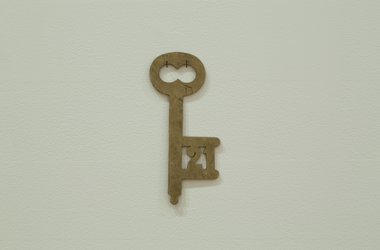

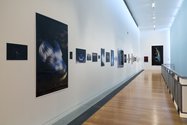
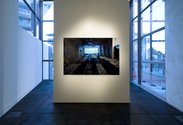
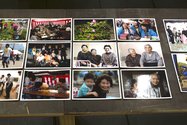
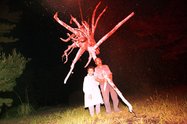
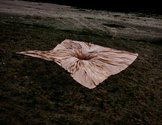
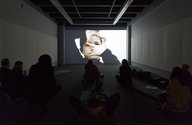

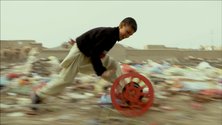

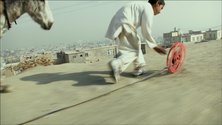
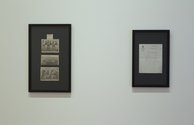
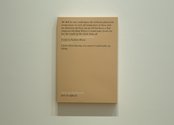


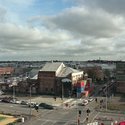

 Two Rooms presents a program of residencies and projects
Two Rooms presents a program of residencies and projects Advertising in this column
Advertising in this column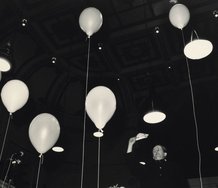
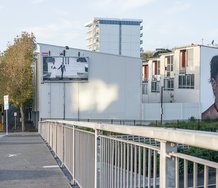
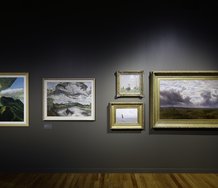
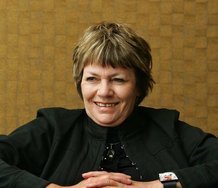
This Discussion has 0 comments.
Comment
Participate
Register to Participate.
Sign in
Sign in to an existing account.